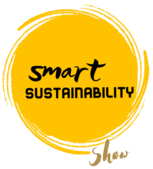Healing the Land: How Ancestral Knowledge is Shaping Modern Invasive Species Eradication
In the face of an accelerating biodiversity crisis, one of the most innovative responses doesn’t come from high-tech labs or AI-driven monitoring systems—it comes from the past.
Across the Pacific and beyond, ancestral knowledge systems are playing a powerful role in shaping modern approaches to invasive species eradication. These Indigenous frameworks, rooted in observation, reciprocity, and deep ecological literacy, are informing and transforming how communities and scientists tackle one of the world’s most pressing environmental challenges. And there’s a lot we can learn from that approach!
Understanding the Land Through Relationship
Ancestral knowledge—also known as Traditional Ecological Knowledge (TEK)—is built on thousands of years of lived experience and relationship with land, sea, and sky. Nature after all is manifested strategies in how things are done. For Indigenous communities, ecosystems are not collections of resources to be managed, but living relatives to be cared for. This relational worldview brings a profound shift in perspective:
Invasive species are not just pests or problems—they are indicators, messengers, and sometimes even cautionary teachers
Where Western science often treats invasions as isolated biological events, Indigenous knowledge places them in a broader context.
What land-use changes allowed the invader in? What cultural practices were disrupted that once kept this balance? This holistic thinking can reveal the underlying causes of ecological breakdown and guide more meaningful, long-term solutions.
Eradication Guided by Culture: example Tetiaroa Atoll, French Polynesia
One powerful example of this integration can be seen in the Tetiaroa Atoll in French Polynesia. Here, Indigenous leaders partnered with conservation groups to use drone technology to control invasive rat populations that were devastating seabird colonies. But the project didn’t just drop poison and leave—it involved rituals, education, and community consultation rooted in ancestral stewardship. The result wasn’t just an ecological success, but a cultural restoration too.
In Hawai‘i, the revival of ahupua‘a—traditional land divisions that connect mountains to sea—has helped structure invasive species removal within a broader system of water, forest, and reef health. Rather than isolated cleanup projects, communities are rebuilding entire ecosystems based on ancestral zoning principles. The presence of invasive mangroves or tilapia isn’t just seen as a problem to fix, but as a disruption to restore through holistic land care and communal engagement.
Science and Ancestry in Dialogue: Care, Consent, Ceremony
Modern technology still plays a role—drones, GIS mapping, biocontrol agents can help as tools — but it’s increasingly being applied in ways that respect and incorporate traditional protocols!
In places like Aotearoa (New Zealand), Māori iwi (tribes) are leading invasive species management on their lands, blending genetic tracking with cultural narratives of kaitiakitanga “guardianship”. TEK informs not just what to do, but how to do it—with care, with consent, and with ceremony.
This convergence isn’t about romanticizing the past. It’s about recognizing that ancestral systems hold deep ecological intelligence that is rooted in a spiritual understanding and evolution of the land and connection to the human being. —It is especially valuable in an era of uncertainty and change. When ancestral knowledge is centered, eradication becomes more than a technical fix. It becomes a healing act—of land, culture, and community. This is why in the Smart Sustainability Show, this Wisdom is centric. It is more powerful than all modern achievements. Combined with modern achievements - it can help accelerate healing in alignment with meaning, love, purpose and our spiritual inheritance.
A Future Rooted in Respect
As invasive species continue to threaten biodiversity around the world, the most resilient solutions may lie not only in labs but in oral histories, seasonal calendars, and sacred relationships to place. By honoring these ancestral frameworks, we don’t just remove the invader—we restore the story.
And that might just be the cutting edge we need.
How deeply connected Indigenous People are with Earth is expressed in these episodes: Father Sun, Mother Earth, Nature’s Wisdom: Four Races & Four Elements, Winter Solstice: Rebirth of the Planet “Exceptional interview. The questions were excellent and Gerald's answers drove straight to truth. Everyone needs to hear this.”
If you like this approach to sustainability, please share the article. Connect with us. Follow us. Share your insights with us. the Smart Sustainability Show is a platform that brings spiritual sustainability in unison with modern understanding. All tied to the Sacredness of Creation and Life.
www.smartsustainabilityshow.com
#SacredWisdom #Nature #EcoSystems #Indigenous #SpiritualSustainability #SmartSustainability

